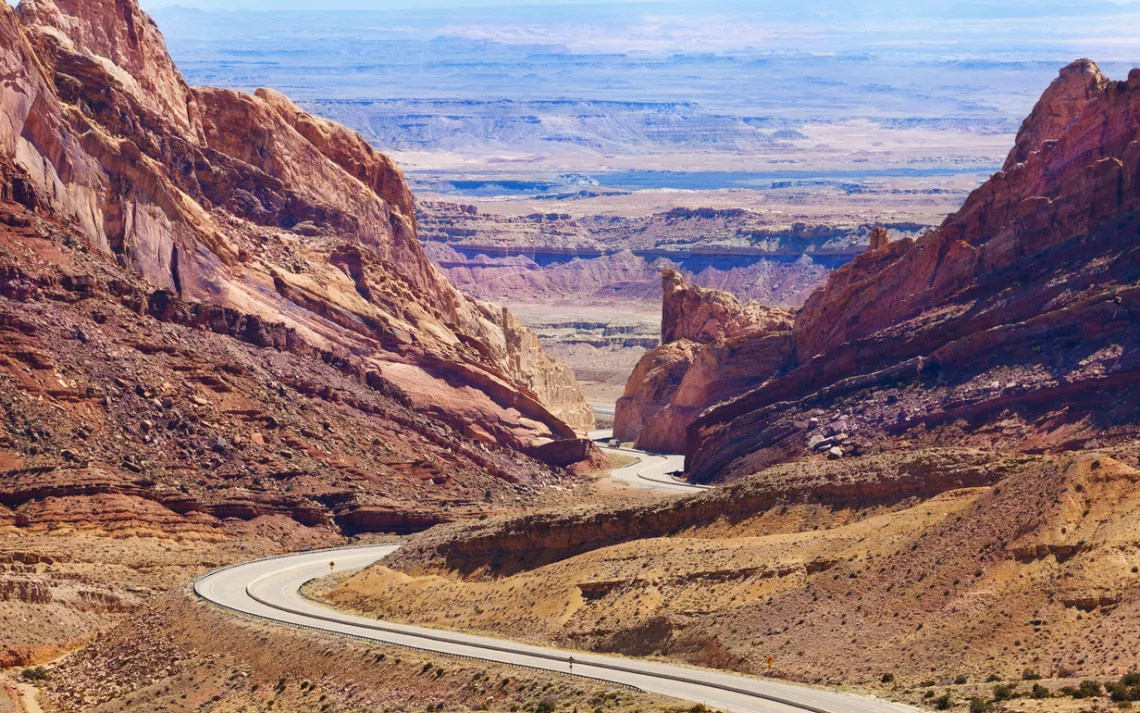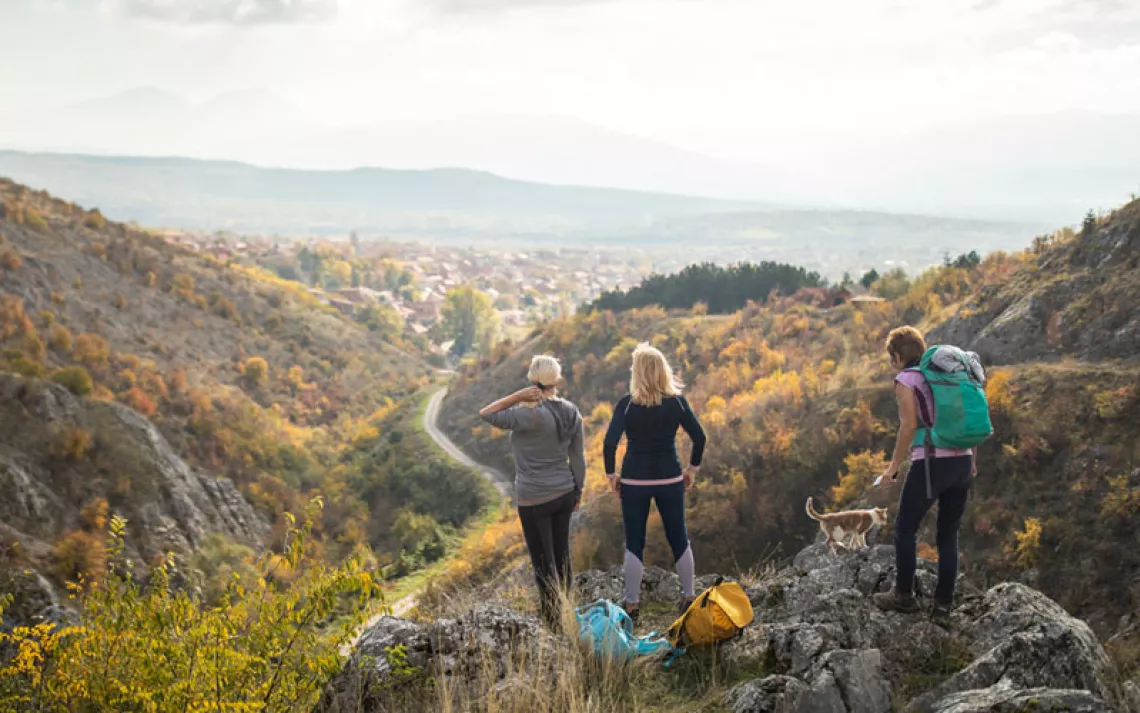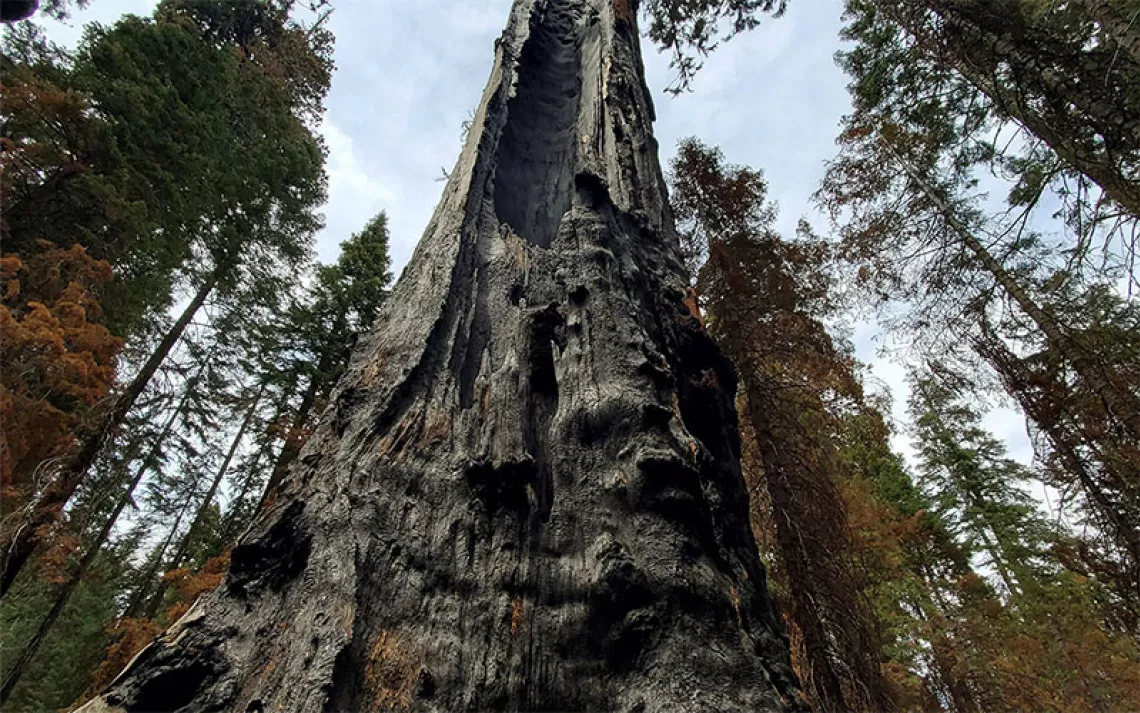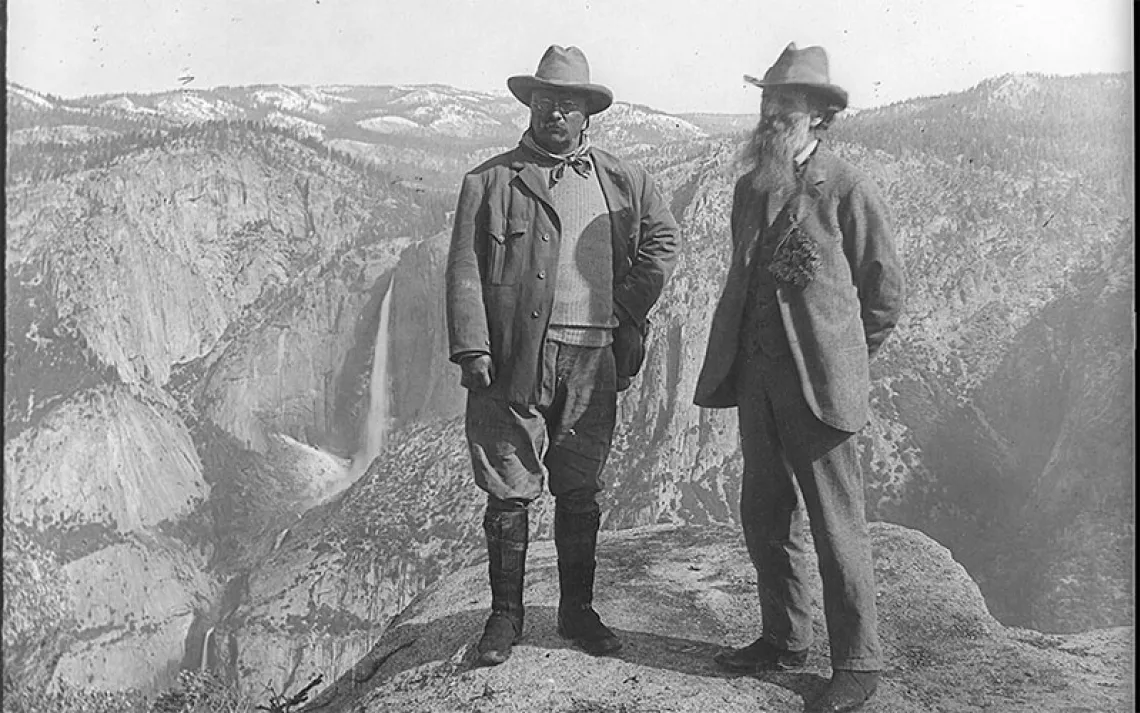Searching for the Meaning of Wilderness in Utah's Big, Open Desert
An excerpt from "Open Midnight: Where Ancestors and Wilderness Meet"

Photo by IStock | SerrNovik
An excerpt from Open Midnight: Where Ancestors and Wilderness Meet, reprinted courtesy of Trinity University Press
Springtime temperatures had already hit 60 degrees twice, but driving east that day through the San Rafael Swell on I70, I knew winter had returned to the desert. The late morning sun thawed the air that shimmered in front of me before striking some distant sandstone boulders, wet from snowmelt, converting them into 50,000-carat diamonds.
I was in a great mood.
Driving that part of I70 is always spectacular, but that day, cutting through massive cliffs and crossing long plateaus with the light and dancing shadows and dusting of snow, the canyon walls expanded into new dimensions. I was in a good mood because of the beauty and the bright sun, and because I was driving away from Castledale and not toward it. I like Castledale, that sleepy seat of a sleepy county on a highway time left behind, but the meetings I’d been attending there to observe and answer questions from their Public Lands Council were always stressful. Emery County has a Public Lands Council because, like most counties in southern Utah, it is mostly public land—federal land, owned by all Americans. The stress results from the disconnect between local and federal control that is bigger than this landscape. For me working with the Southern Utah Wilderness Alliance (or SUWA), this translated very simply: We represent the national interest and believe there to be 1.5 million acres of potential wilderness in Emery County, while most Emery County residents don’t believe in federally designated wilderness but might be able to live with 400,000 acres, no more, and hopefully a whole lot less. Emery County was in the midst of creating a proposal for a Public Lands Plan that included some wilderness but many more motorized routes and mines and historic sites. To me, representing the rest of America has always involved looking for a balance between the desires of rural counties and the protection of the wilderness qualities that surround them. Often this meant determining what exactly rural people actually need based on current political and economic realities.
To many, this is Utah’s wild heart, though on the map it’s closer to its navel. For most of Utah’s population living along the Wasatch Front, Emery County and the San Rafael region is the most accessible big wilderness in Utah. Although I didn’t hear anything new at the meeting that morning, I did have two concrete revelations. First, county officials were more willing to kill the process than to commit political suicide by negotiating with SUWA. Second, I will never again argue about what constitutes wilderness. My heart can no longer bear hearing, “Why do you people insist that a place can’t be wild if it has dirt roads and motorized vehicles?”
Emery County has tried to pass a number of different land use bills (national monuments, National Conservation Areas, etc.), which gave such little protection to the values held dear by SUWA and our constituents that we mounted serious, successful efforts to squelch them.
This section of I70 is steep for an interstate, as evidenced by emergency escape lanes for trucks that have lost their brakes. I’ve learned that if I enter the top curve at the proper speed, I can let the Ford go. We drop down the south straightaway, letting gravity have its way with us, before flying through the big curve to the east as the freeway exits the massive gap that was blasted through the cliff during construction. I don’t touch any pedals. I love the feeling of being spit out of the cliff onto the flats that maps call the San Rafael Desert. It’s like being born every time.
Normally I continue east, straight past Green River and onto Highway 191 to Moab. But that day I took the Hanksville exit and drove south. To the west, the lower San Rafael Swell rose up off the desert floor, its multicolored sandstone layers tilting up into an immense wave that freezes just before breaking. To the east, the San Rafael Desert seemed calm by comparison: shortcliffed mesas and then long, rising vistas broken by the occasional wash and butte. I drove across the San Rafael River knowing that somewhere to the east, the Greater Canyonlands region began and the rest of the world ended.
*
My destination that day was the area northeast of Hanksville, the rolling desert covered in blackbrush and sage and dissected by a dozen different routes. I needed to know where they go, and why.
I pulled over and checked the map and estimated my turnoff to be fifteen miles away. The dark vegetation seemed to have been dropped from the sky, landing on a perfectly white carpet, the morning’s snow melted from any surface not perfectly horizontal.
Lately I’d focused my fieldwork on Greater Canyonlands. Our SUWA mapmakers had drawn a geographically and biologically significant border defining a large area with the official Canyonlands National Park at the center. Geographical boundaries curve and jut. Political boundaries are straight. Straight lines don’t exist in Canyonlands or in nature in general, with the exception of the webs of particular spiders or by chance when ice or rocks break.
By 1964, when the U.S. Congress officially created Canyonlands National Park, Secretary of the Interior Stewart Udall had watched political forces cut and gut and chip away at the vision he had for the area since first seeing it in 1961. The same ideology was working then that we fight now: Some see protecting any landscape as a threat to their ability to profit from its destruction. Back then, Utah’s governor, George Dewey Clyde, fought the new national park, its sandstone cliffs and towers. “We’re a mining state,” he said. “Someday we might need all this as building stone.” Now Governor Gary Herbert says we need it for the oil, natural gas, and tar sands and that “Utah is open for business.”
Herbert fits right into Utah’s conservative political scene. The reddest state in America, Utah’s electoral votes are never in question, and nowadays our Democrats need to act like Republicans to stay in office. It’s getting worse, not better. Somehow it’s easier now, not just in Utah but in the country. We don’t need to seriously consider the issues anymore because those leading our parties, both Republican and Democratic, tell us exactly how to think.
*
I pushed “seek” on my radio and let it spin through the stations, which it did until we were free of the cliffs, when Ford’s antenna caught Rush Limbaugh on my radio. I’ll listen to Rush once in a while, when nothing else is available. I swear that Fox and Rush and Hannity and the rest of them are available on the radio anytime in any place in Utah, regardless of its remoteness. It must be a law. Hearing Rush talking to one of his “dittoheads” always makes me think that we may be sub-speciating.
We are members of the species Homo sapiens (human who knows) and the subspecies Homo sapiens sapiens (human who knows that he knows).
That being true, what would we call the two new subspecies? How about Homo sapiens selfishi and Homo sapiens integradis—human who is selfish and human who is integrated? Or better yet, Homo sapiens convergi/Homo sapiens divergensis—convergent and divergent humans?
Much better.
I’d read once that most children are divergent thinkers in that they’re more creative and less constrained and see many different possibilities. Adults are more likely to focus on one thing and look only for ideas that support that focus. They converge on one specific idea.
I’d driven Highway 24 at least 50 times: getting from Moab to Escalante, where I had projects for a few years; or back from river trips that ended at Hite, on Lake Powell; or to hike in the Maze.
District of Canyonlands National Park. I’d never paid much attention to that part of the road, as I was always on my way to somewhere else. That day was different. I was moving slow, looking for my turnoff. That morning’s meeting featured Guy, a towering member of the Public Lands Council who makes his living as a highway patrolman. He represents so called “recreational interests”—the motorized crowd, that is. He nearly lost it during a discussion of whether the landscape bisected by Highway 24 had wilderness qualities. “That’s the ugliest stretch of highway on earth,” he ranted, his face turning red.
Who gets to say? Beauty has many different dimensions. I wondered if how we see beauty might also have something to do with subspeciation. It might have just been coincidental that I started thinking about modern humans splitting into subspecies after spending the morning with Guy.
I’d been on a number of field trips with Guy. He definitely feels ownership of these places. He acts entitled. We’re diametrically opposed when talk turns to motorized routes. He loves to ride his four-wheeler and, for him, there can never be too many routes. To me, in many places, one route is too many. Once upon a time, long ago and far away, opposing sides might meet, negotiate, compromise by agreeing to close some routes while keeping others open. Now, the opposing sides—on issues involving not just routes or wilderness but nearly everything—are so far apart that any middle ground is unacceptable to everyone.
During field trips we would split up and ride with those with whom we disagree. On one hand, getting to know one another helps us realize that while we disagree about wilderness, we hold much in common—we share more than we don’t. On the other hand, the empathy resulting from a deeper understanding often feeds ambivalence. Learning about who they are, what they have, and how they see the world makes it difficult to blame them for hating what I love.
Although none of my colleagues seems to suffer riding with Guy, I never wanted to. He really pisses me off. Like no other rural person, Guy digs under my skin. I can’t explain it. I’ve read enough pop psychology to know that when something about a person drives me crazy, there’s a good chance that it’s part of my own shadow.
Guy is always quick to say a particular route to a particular viewpoint is legitimate because how else would his brother’s mother-in-law be able to get there without a vehicle? Or insist that motors be allowed on the Colorado River because after a long day at work, he and his buddies love to “float down a few miles then motor back home.” He’s a very angry man. I’d read recently that anger is based on fear. I wondered what he’s afraid of. What am I afraid of?
This is what I was thinking headed south, looking for the dirt road leading east into the San Rafael Desert and what the Utah Wilderness Coalition calls the San Rafael River Unit of America’s Redrock Wilderness Proposal.
Convergi believes that we’re the chosen generation of the chosen species in the chosen country, and that all previous people have existed only for our benefit.
Divergensis lives as part of an infinite system moving toward an unknown future.
Divergensis and convergi now speak different languages and have little use for one another. While interbreeding may still be biologically possible, it is unlikely to happen, the two subspecies having lost any attraction to each other.
The softness of the San Rafael Desert—its subtle colors, red, yellow, pink in places, its pure wildness but lack of iconic features—make it a good test for convergence and divergence.
With the signing into law of the Wilderness Act in 1964, 11 million acres in 54 different areas were officially designated wilderness. With some exceptions, places designated during this first phase were big: hundreds of thousands of forested areas and massive peaks, much of it rock and ice. The Bob Marshall Wilderness in Montana, Bridger Wilderness in Wyoming (including key parts of the spectacular Wind River Range), Glacier Peak in Washington’s Cascades, and the John Muir Wilderness in the High Sierra of California are good examples. I imagine that some controversy surrounded these designations, but let’s face it, there weren’t a lot of ideas about how to better use these spectacular places. Those first designated areas fit the key elements outlined in the definition of wilderness within the Wilderness Act: They’re big, over 5,000 acres; they’re “untrammeled” by man—“trammeled” meaning to catch or hold in or as if in a net, enmesh, or to prevent or impede the free play of. There we are visitors who do not remain.
During the second phase, a different standard was used to designate wilderness. These places didn’t have high peaks with huge, spectacular views but were still wild—with “ecological, geological, or other features of scientific, educational, scenic, or historic value”—as outlined in the act.
The recent Omnibus Public Lands Management Act is a good example.
This law, signed by President Barack Obama in 2009, designated nearly 2 million acres of wilderness, much of it in conjunction with national parks, a lot of it in Idaho, some of it in Washington County in the southwest corner of Utah. This did not come easily. After five years of meetings, field trips, flat tires, closed-door negotiations, backroom deals, destroyed partnerships, exploded trusts, and in the end, serious congressional lobbying, wilderness supporters got 130,000 acres of stark, rugged, diverse, prickly—gorgeous!—desert in southwestern Utah included in this act. The process was like making sausage, but to SUWA the result was palatable.
New designations come hard because the proposed areas don’t look like Glacier Peak or Bob Marshall or Wind Rivers—pictures of which have inadvertently and erroneously replaced the definition of wilderness in the minds of those who oppose further designation of wilderness. The San Rafael Desert definitely doesn’t look like Glacier Peak.
We seem to be entering phase three of wilderness designations, involving factors often ignored in the definition of wilderness: “land retaining primeval character and influence” that has “substantially unnoticeable” evidence of human impact, and offers “opportunities for solitude.” I read this to mean places remote enough or rugged enough to have values we appreciate in proportion to how crowded and noisy, weird, complicated, and wired the rest of our world has become. Besides its unique natural beauty and biodiversity, the San Rafael Desert offers rare solitude, threatened by hundreds of miles of roads that exist for the sole purpose of giving motorized recreationists fun, new, and exciting places to ride.
Although it’s not much, convergi and divergensis do agree about some wilderness in southern Utah. But not the San Rafael Desert.
Homo sapiens convergi are found on both sides of this issue. On the right, some see only one aspect of wilderness: big, scenic, untouched areas for which no modern economic use can be found. On the left, after years and thousands of hours and miles and photographs, there are those hardcore wilderness advocates who have converged on the nearly 10 million acres of land administered by the Bureau of Land Management found to have wilderness-worthy qualities and are vocally critical of SUWA or any organization that might think about settling for anything less.
Did Howard Zahniser and Olaus Murie, the chief architects of the Wilderness Act, consciously create this three-pronged definition for wilderness in order to give us what we needed at different times in the future, the way a backpacker might leave a food cache on a long expedition? These phases, for me, define three dimensions of wildness as it applies to life now. The awe we experience in the presence of massive, iconic wilderness taps into the wild yet hidden parts of us. Ecologically and geologically diverse wilderness is made up of an infinite series of intact and complex interconnected systems, which, in my view, is one important definition of wildness. And now, the idea of solitude in wilderness areas becomes the focus at a time when we’re all facing planetary problems, when we’re on the verge of letting the noise of our own technologies drown out the sound of life itself, including possibly undreamed solutions. Solitude, I believe, is the connective tissue between the outer wilderness and our inner wildness, where clues to our long-term survival have always been found.
 The Magazine of The Sierra Club
The Magazine of The Sierra Club







